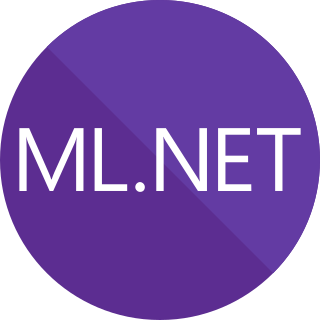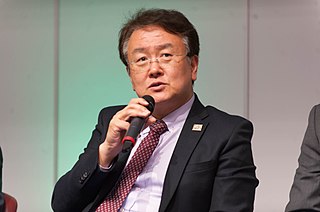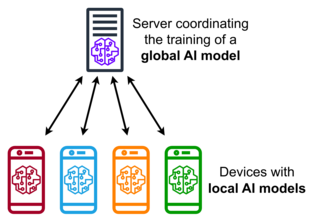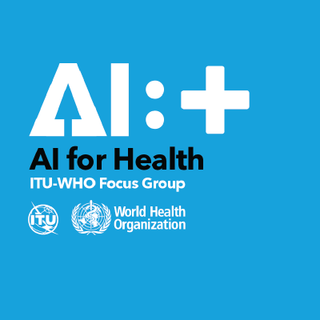
The International Telecommunication Union Telecommunication Standardization Sector (ITU-T) is one of the three Sectors (branches) of the International Telecommunication Union (ITU). It is responsible for coordinating standards for telecommunications and Information Communication Technology, such as X.509 for cybersecurity, Y.3172 and Y.3173 for machine learning, and H.264/MPEG-4 AVC for video compression, between its Member States, Private Sector Members, and Academia Members.

The Open Systems Interconnection model is a conceptual model from the International Organization for Standardization (ISO) that "provides a common basis for the coordination of standards development for the purpose of systems interconnection." In the OSI reference model, the communications between systems are split into seven different abstraction layers: Physical, Data Link, Network, Transport, Session, Presentation, and Application.

Machine learning (ML) is a field of study in artificial intelligence concerned with the development and study of statistical algorithms that can effectively generalize and thus perform tasks without explicit instructions. Recently, generative artificial neural networks have been able to surpass many previous approaches in performance. Machine learning approaches have been applied to large language models, computer vision, speech recognition, email filtering, agriculture, and medicine, where it is too costly to develop algorithms to perform the needed tasks.
IMT-2000 is the global standard for third generation (3G) wireless communications as defined by the International Telecommunication Union.
4G is the fourth generation of broadband cellular network technology, succeeding 3G and preceding 5G. A 4G system must provide capabilities defined by ITU in IMT Advanced. Potential and current applications include amended mobile web access, IP telephony, gaming services, high-definition mobile TV, video conferencing, and 3D television.

LTE Advanced is a mobile communication standard and a major enhancement of the Long Term Evolution (LTE) standard. It was formally submitted as a candidate 4G to ITU-T in late 2009 as meeting the requirements of the IMT-Advanced standard, and was standardized by the 3rd Generation Partnership Project (3GPP) in March 2011 as 3GPP Release 10.
International Mobile Telecommunications-Advanced are the requirements issued by the ITU Radiocommunication Sector (ITU-R) of the International Telecommunication Union (ITU) in 2008 for what is marketed as 4G mobile phone and Internet access service.

The Next Generation Mobile Networks (NGMN) Alliance is a mobile telecommunications association of mobile operators, vendors, manufacturers and research institutes. It was founded by major mobile operators in 2006 as an open forum to evaluate candidate technologies to develop a common view of solutions for the next evolution of wireless networks. Its objective is to ensure the successful commercial launch of future mobile broadband networks through a roadmap for technology and friendly user trials. Its office is in Frankfurt, Germany.
International Mobile Telecommunications-2020 are the requirements issued by the ITU Radiocommunication Sector (ITU-R) of the International Telecommunication Union (ITU) in 2015 for 5G networks, devices and services.
The Open Neural Network Exchange (ONNX) [] is an open-source artificial intelligence ecosystem of technology companies and research organizations that establish open standards for representing machine learning algorithms and software tools to promote innovation and collaboration in the AI sector. ONNX is available on GitHub.

ML.NET is a free software machine learning library for the C# and F# programming languages. It also supports Python models when used together with NimbusML. The preview release of ML.NET included transforms for feature engineering like n-gram creation, and learners to handle binary classification, multi-class classification, and regression tasks. Additional ML tasks like anomaly detection and recommendation systems have since been added, and other approaches like deep learning will be included in future versions.

AI for Good is a year-round digital platform of the United Nations' International Telecommunication Union, where AI innovators and problem owners learn, discuss and connect to identify practical AI solutions to advance the United Nations Sustainable Development Goals. The impetus for organizing global summits that are action oriented, came from existing discourse in artificial intelligence (AI) research being dominated by research streams such as the Netflix Prize.

Chaesub Lee PhD is a telecommunication executive who served as the Director of ITU Telecommunication Standardization Bureau, the permanent secretariat of the International Telecommunication Union Telecommunication Standardization Sector (ITU-T) from 2015 until 2022.

Federated learning is a machine learning technique that trains an algorithm via multiple independent sessions, each using its own dataset. This approach stands in contrast to traditional centralized machine learning techniques where local datasets are merged into one training session, as well as to approaches that assume that local data samples are identically distributed.

The ITU-WHO Focus Group on Artificial Intelligence for Health is an inter-agency collaboration between the World Health Organization and the ITU, which created a benchmarking framework to assess the accuracy of AI in health.

Y.3173 is an ITU-T Recommendation building upon Y.3172 specifying a framework for evaluation intelligence levels of future networks such as 5G (IMT-2020). This includes:

Y.3176 is an ITU-T Recommendation, building upon Y.3172 and Y.3173, specifying a framework for evaluation intelligence levels of future networks such as 5G (IMT-2020).
Y.3800 is an ITU-T Recommendation with the long name "Overview on networks supporting quantum key distribution", that gives an overview of networks supporting quantum key distribution (QKD) cryptographic protocols.

Y.3181 is an ITU-T Recommendation specifying an Architectural framework for Machine Learning Sandbox in future networks. The standard describes the requirements and architecture for a machine learning sandbox a in future networks including IMT-2020.

DVC is a free and open-source, platform-agnostic version system for data, machine learning models, and experiments. It is designed to make ML models shareable, experiments reproducible, and to track versions of models, data, and pipelines. DVC works on top of Git repositories and cloud storage.












